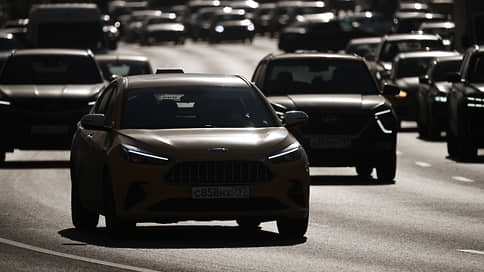The quieter you drive, the more is a bonus.
[ad_1]

A third of drivers in Russia enjoy the maximum discount when concluding an MTPL contract for accident-free driving, and the share of such citizens continues to increase. This follows from statistics presented by the Russian Union of Auto Insurers (RUA). The most careful drivers are registered in Moscow, the Moscow region, St. Petersburg and the Leningrad region – more than 40% of all those insured under the “motor citizen”. In Chechnya and Dagestan, the share of such motorists is at least ten times less.
RSA published fresh data on drivers who have the maximum discount when purchasing a compulsory motor liability insurance policy. The maximum discount – 54% (bonus-malus coefficient 0.46) – is provided by insurers to clients who were not at fault for an accident over the past ten years. The system takes into account both “severe” accidents with injuries and deaths, and minor ones with damage only to hardware. According to RSA, in Russia the share of such drivers (out of all those insured under compulsory motor liability insurance) at the end of the year amounted to 31.1%. At the end of six months of 2023, as Kommersant reported, the figure was 29.4%.
Most “accident-free” drivers are in Moscow – 46.8%.
In St. Petersburg – 43.1%, in the Moscow region – 42%, Leningrad region – 40.8%, Perm region – 40.2%, Novosibirsk region – 39%.
The least is in Chechnya (3.8%), Dagestan (3.9%), Ingushetia (5.3%) and Tuva (5.4%).
The share of careful drivers in Chukotka (11.6%), in the Nenets Autonomous Okrug (11.8%), and Trans-Baikal Territory (12.6%) is small.
In regions where there are few drivers with a minimum driver’s license, as a rule, a high accident rate is recorded, RSA explained to Kommersant. There, the vehicle fleet is dominated by cars older than ten years, which, again according to statistics, are more likely to get into accidents. “These regions are characterized by a relatively large proportion of citizens who drive without insurance at all,” the union says. “In addition, there are high risks of fraud within the framework of compulsory motor liability insurance: drivers are sometimes involved in schemes with fictitious accidents in order to receive payments.” This is indirectly evidenced by the data on average payments for “automobile citizenship”: the largest is in Ingushetia (162.4 thousand rubles), North Ossetia-Alania (145.3 thousand rubles), Chechnya (144.8 thousand rubles. ). In Moscow and the Moscow region, for example, the average payment is 90.6 thousand and 87.2 thousand rubles.
RSA calculations are based on registration data of car owners (passport must be presented when applying for compulsory motor liability insurance). In other words, if a driver is registered in Moscow, he will be reflected in the statistics as a motorist who primarily moves around the capital, although this is not always true. It must be borne in mind that SAR data does not 100% correlate with the accident rate, notes in this regard the coordinator of the Blue Buckets movement, Petr Shkumatov.
The capital’s data center explains Moscow’s leadership in the insurance rating with an “integrated approach to the development of the transport system,” including the installation of cameras, adjustments to the operating modes of traffic lights, and traffic patterns.
The Moscow Region Ministry of Transport added that they are carrying out not only “operational and long-term measures on the road network” in the region, but also changing “the behavioral model of traffic participants by promoting compliance with traffic rules.”
Vice-President of the National Automobile Union Anton Shaparin says that more and more drivers, when involved in a minor accident, prefer to negotiate on the spot and pay in cash: if formalized, the BMR is reduced “dramatically.” Therefore, from the point of view of RSA, there are fewer accidents, and there are more people with high BMC, explains Mr. Shaparin. At the same time, he points out, in 2023, according to the traffic police, the accident rate increased by 4.5%. Let us remind you that the State Traffic Inspectorate only includes in its reporting road accidents with deaths and injuries.
Crimea and Sevastopol do not yet appear in the ranking of the most careful drivers. RSA Kommersant was reminded that, according to the law adopted in 2014, Ukrainian policies were valid until their expiration date, and then compulsory motor liability insurance agreements were concluded with Russian companies. Thus, this year marks the end of the ten-year period required to assign the minimum bonus-malus coefficient to a client who has not had an accident. “Since the value of the KBM is recalculated once a year (April 1), it seems fair to include Crimea and Sevastopol in the general ranking starting from the second half of 2025,” RSA told Kommersant.
[ad_2]
Source link








